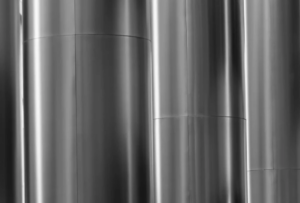Don’t look now but the largest demographic group in history – those under-40-years old – is leading the charge for change in homeownership. The grandchildren of the fabled “baby boomers” are now married with children of their own and are redefining what “luxury” living is all about. For many reasons, including the effects of the pandemic, historically low mortgage interest rates, and their goal of having quality education for their young children, these young families are “so over” urban living or long commutes to sleepy suburbs.
This has encouraged suburban developers, architects, and homebuilders to rethink home designs (often reducing the square footage) and change the demands for construction materials. For companies like Acme Brick, which manufacturers a timeless building component – brick – this new normal has resulted in new relevance!
What Young Homebuyers Really Want
This change in the preferences of these young homebuyers has been chronicled by thousands of media outlets. According to this article in the Wall Street Journal, “Their choice of a close-in suburb with a short commute, willingness to trade size and space for a walkable area, and rejection of traditional sleepy suburban landscapes are classics of this age cohort. These generational habits are so pervasive that they are anointing new areas as ultra-luxury spots and sending some previously desirable locations into a downward price spiral.
“This group’s preference for move-in-ready homes is also shifting the burden of fixing up older homes on to sellers, giving rise to new business models for real-estate brokerages and home builders.”
Priority #1 – Low Maintenance
Unlike previous generations, these new homebuyers are not big fans of “fixer-uppers.” Sorry Chip and Joanna. Real estate research strongly suggests that this under-40 group favors new home construction. Why? They don’t want to deal with the chronic maintenance of older homes.
As Brent Snyder of Acme Brick has noted, “They really want to lock-it-and-go. Instead of dealing with painting old, damaged wood, or dealing with worn-out siding, this younger homebuyer wants to spend the weekend traveling, playing with their kids, or entertaining neighbors with a cookout.
“For hundreds of years, brick has had the reputation for ‘low or no maintenance required.’ In fact, we guarantee our brick for the life of the home, up to 100 years. Like their grandparents, these young homebuyers have discovered the truth of the old adage: Everything old is new again.”
This preference for low maintenance has led to another young homebuyer priority.
Priority #2 – Smaller Square Footage
Even if they are financially capable of affording a 3,000+ square foot home, most young buyers would rather pass on a “McMansion.” As this article notes, “For veteran real estate agents, many younger buyers’ definition of a dream home runs directly counter to what they understand about luxury real estate. While real-estate value—and appeal—has long been predicated on square footage, agents say this generation of young families is unimpressed with large homes and lots.”
These young buyers have joined the “empty nesters” (often baby boomers) in their preference for smaller homes. These townhomes or garden homes even have a name: Jewel box homes. They are much smaller footprints with luxury amenities.
Snyder points out that in many cases, these smaller homes have homeowner associations and landscaping services along with other features that make them extremely low maintenance. “We have also realized the demand for these luxury amenities,” he said. Acme Brick offers new home buyers a wide range of high-end amenities, including:
Priority #3 – Shorter Commutes, Better Amenities, and Schools
Even before the COVID pandemic forced companies to allow employees to work from home, the younger buyer was already in the market for close-in suburban communities. They wanted less time on the highway – going to and from work – and more time to spend with families and friends. This led to what is called “master-planned” communities, where resort-like amenities (hiking/biking trails and posh entertainment areas) are complemented by highly rated suburban schools with lower student-to-teacher ratios.
The “work from home” experiment has enabled every worker – young and old – to work from any place they choose. As a result, millions are leaving the cramped apartments and duplexes in the city center and buying a new home in a less stressful suburban community.
Priority #4 – A Sense of Community
Much has been written about the goals and aspirations of this under-40 group. Some of these speculations are smart and some are silly. However, it is abundantly clear from this group’s actions that they are all about living an authentic life. Evidence of this comes from the final and perhaps most important priority of these new homebuyers. They demand a sense of community wherever they live.
Neighborhood events, state-of-the-art amenities, quality schools, and the time to enjoy life that comes from a low maintenance home are all a part of building a sense of community. The WSJ article on this group succinctly sums this up. “If they do move to the suburbs, they still want to socialize, which has given rise to a price divide within suburbs between walkable and non-walkable areas. The number one thing most of these younger buyers are looking for is a sense of community.”
If you are planning to build a home within the foreseeable future, visit your local Acme Brick to browse the latest building and home products.




 Metal roof construction reduces carbon emissions and increases energy efficiency making metal the number one sustainable roofing material of the 21st century. From a versatile standing seam metal roof equipped with solar panels to innovative “cool roof” technology which saves significant costs for homeowners and businesses, metal roofs lead today’s green construction.
Metal roof construction reduces carbon emissions and increases energy efficiency making metal the number one sustainable roofing material of the 21st century. From a versatile standing seam metal roof equipped with solar panels to innovative “cool roof” technology which saves significant costs for homeowners and businesses, metal roofs lead today’s green construction. Metal roofing provides an exciting green construction solution. With low maintenance, energy efficiency, and durability, your new roof can last for fifty years or more. Two popular metal roofing types are aluminum and steel. Both commercial and residential structures use these metals. Which is better? Learn everything you need to know about these metal roofs.
Metal roofing provides an exciting green construction solution. With low maintenance, energy efficiency, and durability, your new roof can last for fifty years or more. Two popular metal roofing types are aluminum and steel. Both commercial and residential structures use these metals. Which is better? Learn everything you need to know about these metal roofs.